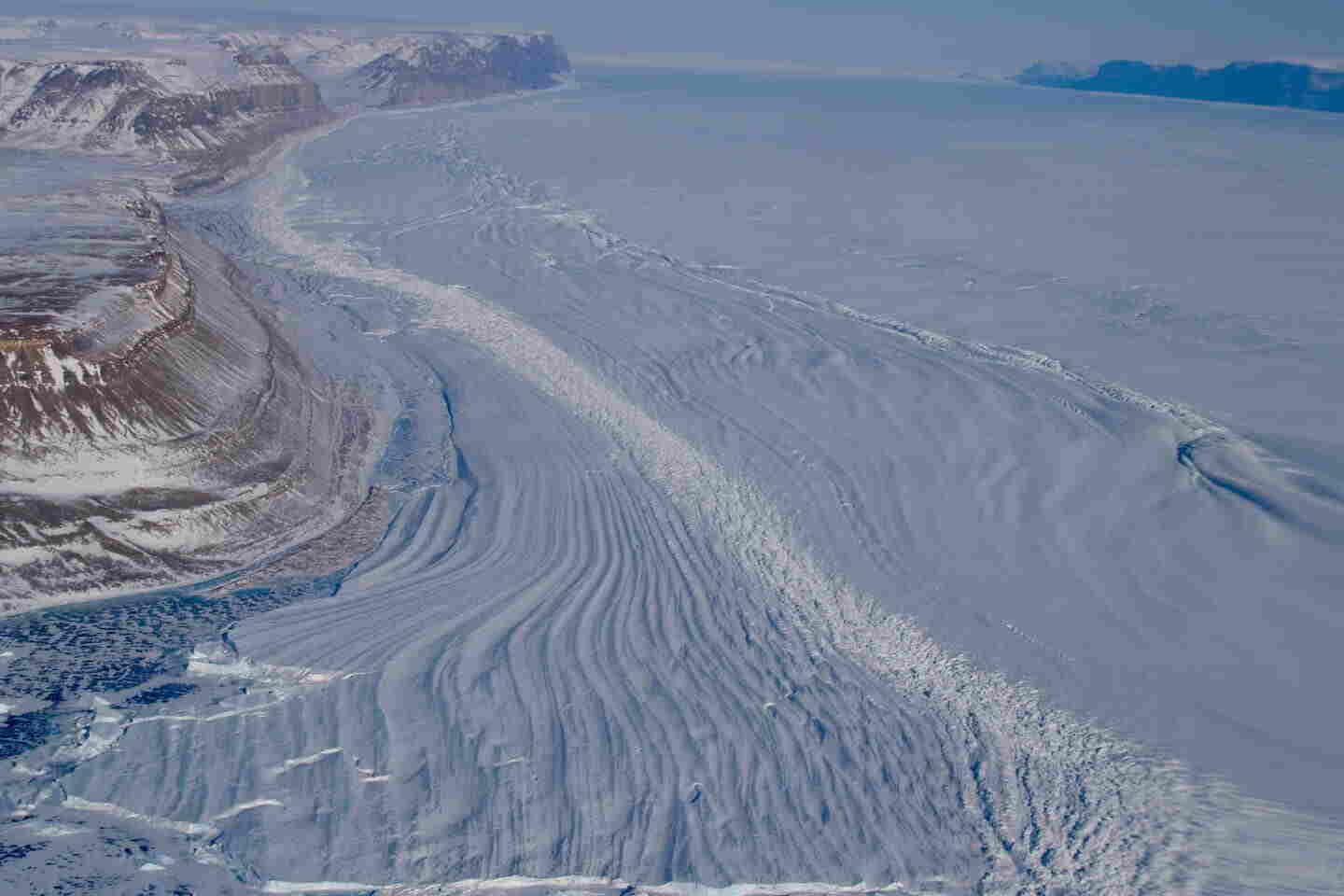EARTH SCIENCES
Supercomputer models reveal disturbing truths about melting glaciers in Greenland, causing growing concerns

Scientists from the University of California, Irvine (UCI) and NASA's Jet Propulsion Laboratory have discovered through supercomputer modeling that the Petermann Glacier in northwest Greenland is melting at an accelerated rate. Their study, which was published recently in the journal Geophysical Research Letters, warns of potentially catastrophic consequences for global sea levels.
The researchers utilized radar interferometry data from European satellite missions and the sophisticated modeling capabilities of the Massachusetts Institute of Technology to uncover the mechanisms responsible for the rapid melting plaguing Greenland's glaciers. They found that the intrusion of warm ocean water underneath the ice has emerged as the primary catalyst behind the accelerated melting experienced since the turn of the century.
The study's lead author, Ratnakar Gadi, a Ph.D. candidate in Earth system science at UCI, detailed the shocking observations made during the study. "Satellite data revealed that the glacier shifts by several kilometers as tides change," said Gadi. "By factoring this migration into the MIT numerical ocean model, we were able to estimate roughly 140 meters [460 feet] of thinning of the ice between 2000 and 2020. On average, the melt rate has increased from about 3 meters per year in the 1990s to 10 meters per year in the 2020s."
Senior co-author Eric Rignot, a professor of Earth system science at UCI and a senior research scientist at NASA's Jet Propulsion Laboratory, emphasized the paradigm-shifting nature of these findings. "For a long time, we thought of the transition boundary between ice and ocean to be sharp, but it's not," said Rignot. "Seawater rises and falls with changes in oceanic tides in that zone and melts grounded ice from below vigorously."
The researchers observed that an elongated grounding zone cavity increases melt rates significantly more than warmer ocean temperatures alone. In one modeling exercise, an increase in the grounding zone cavity from 2 to 6 kilometers led to ice thinning growing from 40 meters to 140 meters.
The implications of these findings are dire. Grounding zone ice melt reduces the resistance glaciers face when flowing toward the sea, hastening their retreat. This acceleration plays a critical role in projecting the severity of future sea level rise, confirming earlier fears that glaciers melt much faster in the ocean than previously assumed.
The predictive power of supercomputer modeling has provided a wake-up call, showcasing the urgency of addressing the climate crisis and its immediate and far-reaching consequences. The collaboration between UCI and NASA's Jet Propulsion Laboratory underscores the seriousness of the issue at hand. Dimitris Menemenlis, a research scientist at NASA's Jet Propulsion Laboratory, joined Rignot and Gadi in this groundbreaking project conducted under a grant by NASA's Cryospheric Sciences Program.
The fate of Greenland's glaciers hangs in the balance, and the consequences of their melting extend far beyond its shores. The global community must take urgent action on a global scale to mitigate climate change, reduce greenhouse gas emissions, and protect our planet's fragile ice sheets. The future of our coastlines, the stability of our climate, and the well-being of future generations depend on it.
